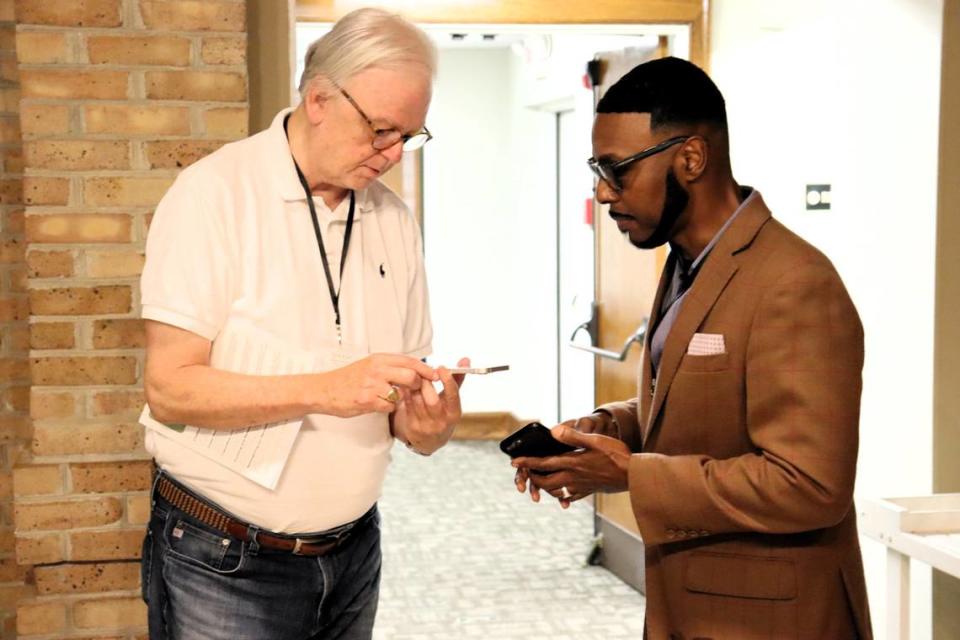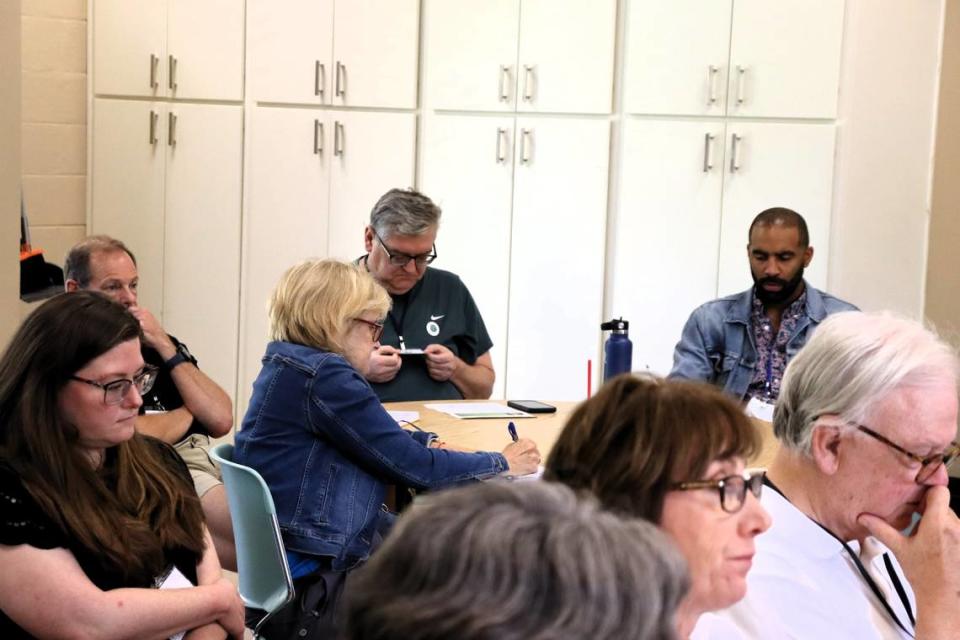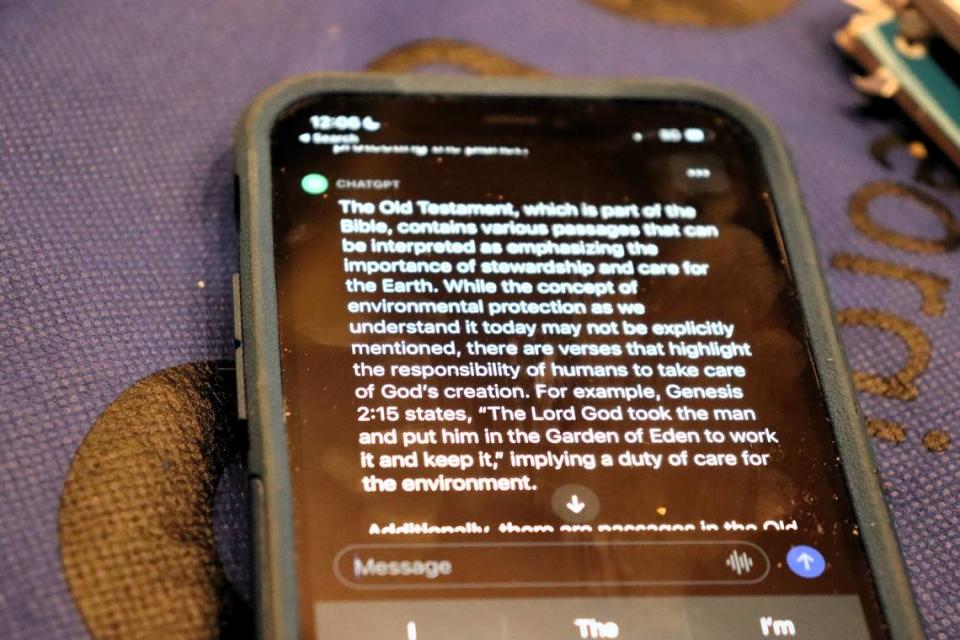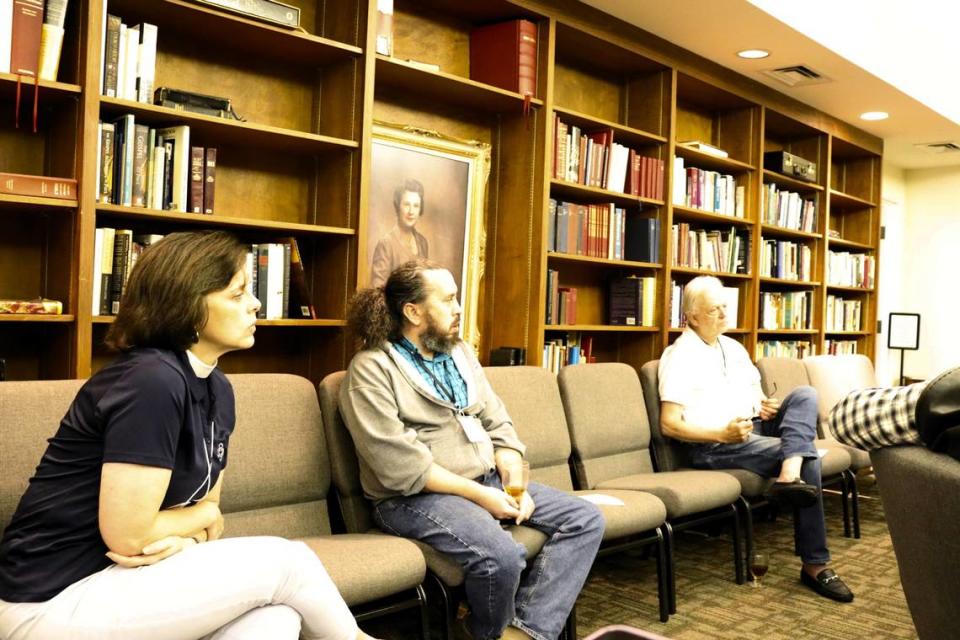These Western Georgia churches are coming together to combat climate change. See how
Churches throughout Georgia are acting on climate change, conducting energy efficiency audits, powering their houses of worship with clean energy and creating teams of parishioners to see the efforts come to fruition.
Pastor Willie J. Barber II of Prospect A.M.E. in Harris County, Georgia is among the leaders of this movement, bringing faith and climate action all under one roof.
“The perception that environmentalists are bad for business or bad for the economy is wrong,” he said at a recent Green Team summit in Columbus.
The sixth-generation Harris County resident grew up surrounded by faith and science.
“I’ve always loved science and I grew up in a faith-rich family,” he said. “I’m a realist. Just because faith is important to us does not mean it has relevance in everyone’s life.”
Much of Pastor Barber’s passion stems from his scientific background. Before he began preaching at Prospect A.M.E. 16 years ago, he had a decades-long career working in the bio-pharmaceutical industry, science, and engineering fields. After working in Schneider Electric’s carbon sequestration pilot program, he woke up to the serious threats and challenges the climate crisis is posing to the world now.
To Pastor Barber, climate action and environmental justice are an obligation of the church.
“We are negligent if we do not use the gift of trust to tell the truth,” he said. “If we don’t tell the truth we’re complicit. Regardless of faith, if we engage in sustainable energy projects at houses of faith, if we are the example for how energy can be produced from what God has given us in nature (outside of fossil fuels) then what does that say to the world around us?”
A growing movement
Prospect A.M.E. Church is one of a hundred houses of worship in Georgia part of a growing network embracing these ideologies through the help of Georgia Interfaith Power and Light (GIPL). GIPL is a nonprofit organization that gives tools and resources to all houses of worship to embrace climate solutions and advocates for clean energy and environmental justice.
However, most of the climate-resilient (GIPL-affiliated) churches are in metro Atlanta. In Columbus (and Harris County, Georgia) there are only four congregations with GIPL achievements.
Prospect A.M.E. has secured funding for solar panels to be put on the roof as well as electric vehicle charging stations in the parking lot, from resources outside of GIPL. However, Pastor Barber will be using GIPL for more connection and collaboration events and the power-wise matching grant.

A green summit to fight climate change
GIPL and St. Thomas Episcopal co-hosted a Green Team Summit on Sept. 30 that echoed the work of St. Thomas’ Green Team and workshopped ideas about how to maintain climate resilience in Columbus while bringing together faith-based leaders and parishioners to take action.
Hannah Shultz, GIPL’s Program Director, held a presentation that offered strategies to build green teams, prompting an impassioned and engaging discussion.
“How do I remind our Temple leaders that this isn’t political?” Ilene Kent, asked Shultz and the group. “I understand we need to take action but how do I bring everyone on board?”

Many of Shultz’s responses included going back to scripture that points to shared values.
He peppered Schultz and the group with questions, reminding people that messaging outside of the walls of the church is where problems arise.
“If we share stories that come out of our faith tradition, that both teach us about our call to care for the planet and help to inspire hope, that is what will bring us together as a community, motivate us, and maybe change the hearts and minds of people who don’t necessarily think this is something that is important to focus on.”
Like energy audits. And reviewing efficiencies and weatherization efforts.
This is part of their power-wise grant matching program, which funds the implementation of energy-efficiency retrofits for faith communities. Several leaders of faith and parishioners told me they will absolutely take up GIPL on their power-wise matching grant to upgrade LED lighting and other appliances.
After the Green Team Summit Kent told the L-E, “I feel like the door has been opened. I know where to go now and I will absolutely use GIPL moving forward.

Can Churches be Climate Resilience Hubs?
Professor Kristin Younguist teaches Intro to Sustainability and Environment at Columbus State University and is finishing her Ph.D. at Auburn in Earth System Science.
Younguist hosted a workshop to come up with adaptation and resilience plans brought forth by climate change. Right now the biggest concern for Columbus is from long extreme heat days with 100+ degrees lasting more than several days, and not cooling down at night.
“Night time temperatures above 80 degrees could be over 52 nights per year by the end of the century,” Younguist told her workshop group. “We could experience 67 days per year over 100 degrees by the end of the century.”
Younguists looked to churches as hubs after reviewing city maps. Churches are prolific in Columbus. In fact, estimates range between 250-500 houses of worship in Muscogee County.
“Churches cover the landscape of Columbus all the way out to Midland, which have been long established,” she said. “They could be a very valuable network. They can act as a way to reach out to the community—as opposed to government and business only being located downtown or midtown.”
Environmental Science professor at CSU and Clean Energy Columbus Co-Founder Troy Keller echoed Younguists’ ideas during the workshop.
“Churches need to reassert themselves as centers of community,” Keller said. “We could reconstruct community through churches as hubs. It could be beneficial to the churches and to the municipalities to think about churches as a center for resilience.”
For Pastor Bob Farrow of St. Nicholas Episcopal in Hamilton, it means utilizing spaces already claimed.
“Large church parking lots are vacant typically six days a week,” Pastor Farrow said. “What if the church began to partner with the city and do something different with that land? Make it more multipurpose.”
Reverend Grace Burton-Edwards of St. Thomas joined the praises for churches to be resilient hubs. She called the conversations, “fascinating.” She went on to say, “The future is collaboration. Non one entity can address this issue. My commitment is to keep collaborating.”


